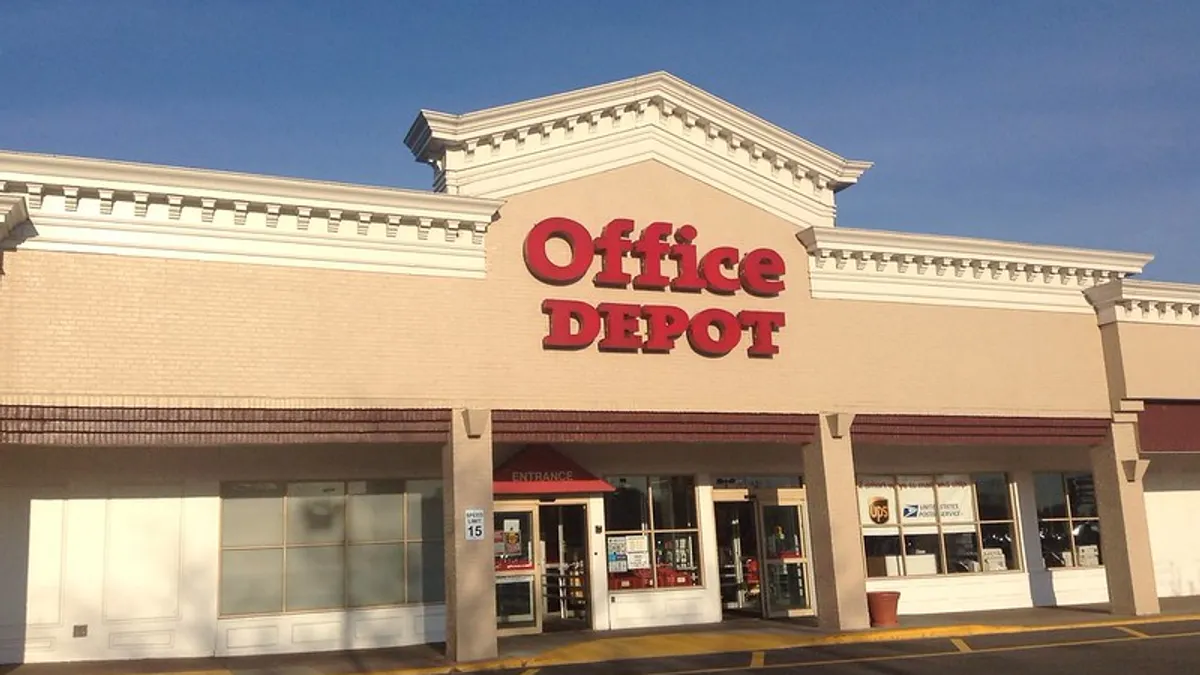Digital Brands Group has acquired American basics apparel brand Stateside for $10 million as it tries to shore up its balance sheet and financial position, and build-out its stable of brands.
The Stateside brand is cash flow positive, with a forecasted $6 million in revenue and $1 million in EBITDA this year, all of which will bolster the cash flow and profits of its new parent, Digital Brands CEO Hil Davis said in an interview.
Digital Brands also announced Tuesday that it has secured a $17.5 million equity line of credit from Oasis Capital that will help it pay down debt and fund its capital needs. Davis told Retail Dive that the credit line will allow Digital Brands to "clean up its balance sheet entirely." The company also tapped Oasis Capital for a $5 million convertible note to help fund the Stateside acquisition, which was paid with cash and Digital Brands stock.
The latest acquisition comes after Digital Brands completed a $10 million IPO earlier in May. In its filing papers, Digital Brands alerted investors to its debt levels — which, with about $15.5 million in outstanding debt, is not large in general terms but was "significant" for a company its size.
The company has racked up also losses over the course of its operating life. For both July and August, S&P Global Market Intelligence listed Digital Brands among the publicly traded retailers most vulnerable to default.
Waiting to IPO until the company had a more robust financial profile may have made for fewer potential risk disclosures at the time. But Davis said the IPO "came earlier than [it] should have" to facilitate more acquisitions by giving the company both cash and a publicly-traded stock to entice prospective targets.
A balance sheet clear of debt takes much of the financial risk off of the table for now. The question for Digital Brands going forward is whether it can bring in and maintain positive profits.
As it eyes the rest of 2021 and beyond, the fate of Digital Brands — which also owns the Bailey 44, Ace Studios, DSTLD and the Harper & Jones apparel brands — will be pegged to acquisitions.
The company is rapidly trying to build itself into a brand conglomerate in the mold of LVMH. Management hopes to do two to four more acquisitions this year and as many as six in 2022, Davis said.
It is also eyeing larger brands, including some that would make more than $100 million in revenue — much larger than any brand the company currently owns. A decade out, the company wants to own somewhere on the order of 50 brands.
In its filing papers, Digital Brands outlined its ideal acquisition targets as: "(1) strong legacy brands that have been mismanaged, (2) strong brands that do not have capital to grow, and (3) wholesale brands that are struggling to transition to e-commerce." Prior to Stateside, its most recent finished purchase was the suit and sportswear label Harper & Jones, which was acquired in October.
Davis outlined a model for Digital Brands that would rest on three categories, or "legs" as he calls them: apparel, home and beauty. As it acquires brands, it picks up data, customer contacts and products that can feed the other brands in the company's portfolio, as Davis envisions it.
The goal is to have customers shopping multiple brands owned by the company, trading among them to create certain looks.
Early next year, the company aims to launch a membership model that Davis likens to that of Restoration Hardware, which offers a standing discount in return for a fee.
"So what we'll do is, we'll leverage wholesale and our own stores to acquire the customer physically, we'll trade them across brands, because we'll be able to have their email address," Davis said. "And we'll show them styles and looks across all our brands that are compelling."
The ability to house dozens of brands and help consumers put them together into various styles would make Digital Brands something like a department store. "If Nordstrom and VF Corp had a baby, we would be the baby," Davis said.
The difference would be that, unlike Nordstrom, Digital Brands would own all its brands. And rather than just collecting the revenue of individual, siloed brands, these businesses would be working together, cross-selling and cross-marketing to each others' customers, according to Davis' vision.
And while the company has "digital" in its name and describes its origins as digitally native, Davis sees a role for physical stores in the future. Those stores wouldn't be like a Nordstrom, housing all its brands, but rather boutiques and a handful of the company's owned brands in each one.
"From the customer perspective, think about how much more interesting it is to walk in and have all these brands," Davis said. "And then think about all the styles and looks we can create that help her or him really figure out the different pieces."
The economics of the store, in Davis' view, would also be more favorable than for a traditional retailer because the operating costs would be split among multiple brands. And if a store didn't work out, Digital Brands could trade the location out to one of its other brands.
It's an ambitious vision to create scale in apparel and other markets that have historically been fragmented, dynamic and prone to the vagaries of consumer tastes and trends. Digital Brands also has to prove that it can acquire and integrate, as well as operate at scale, profitably. Davis said that the Stateside acquisition, with its positive cashflow, helps put the company on that path.






















